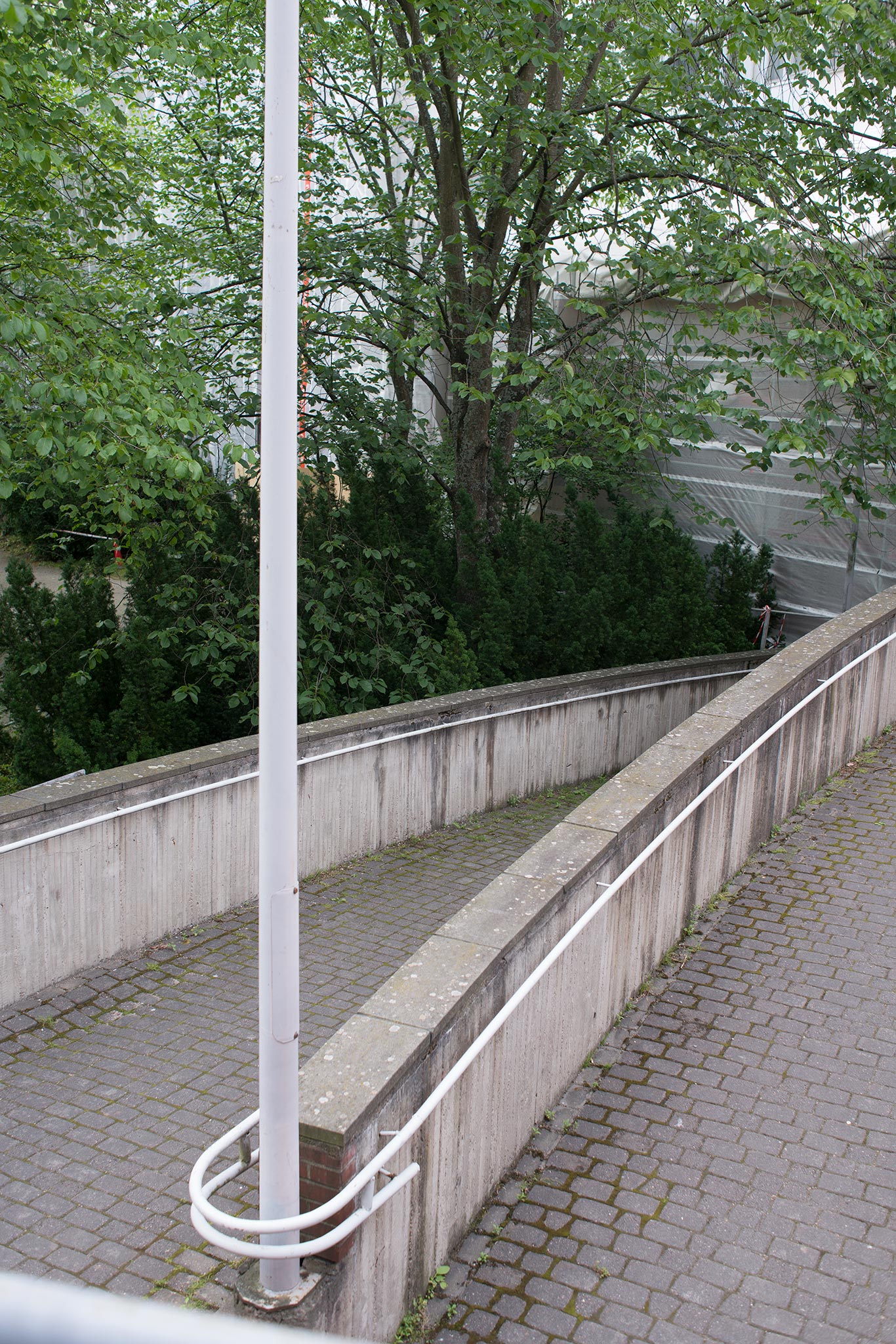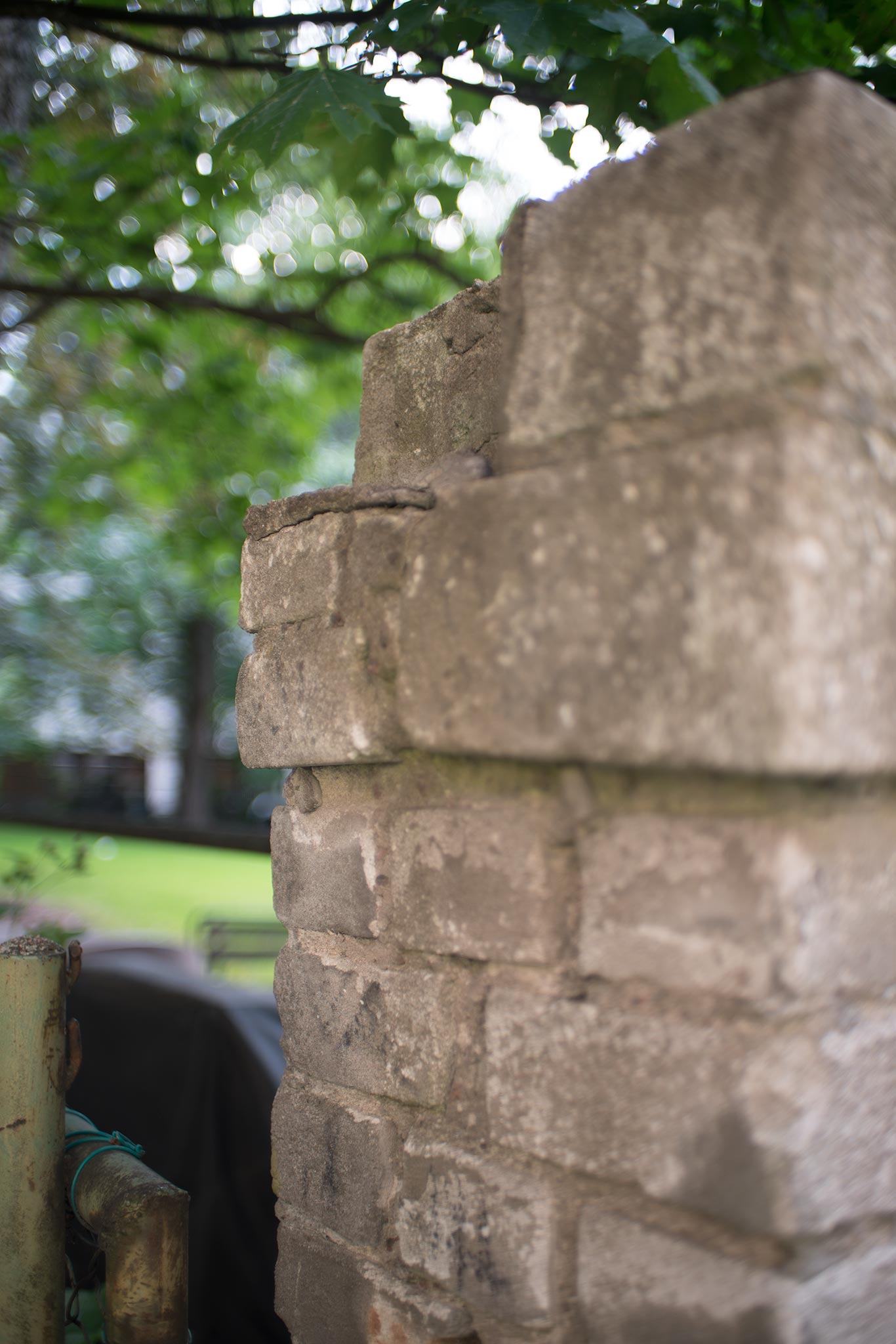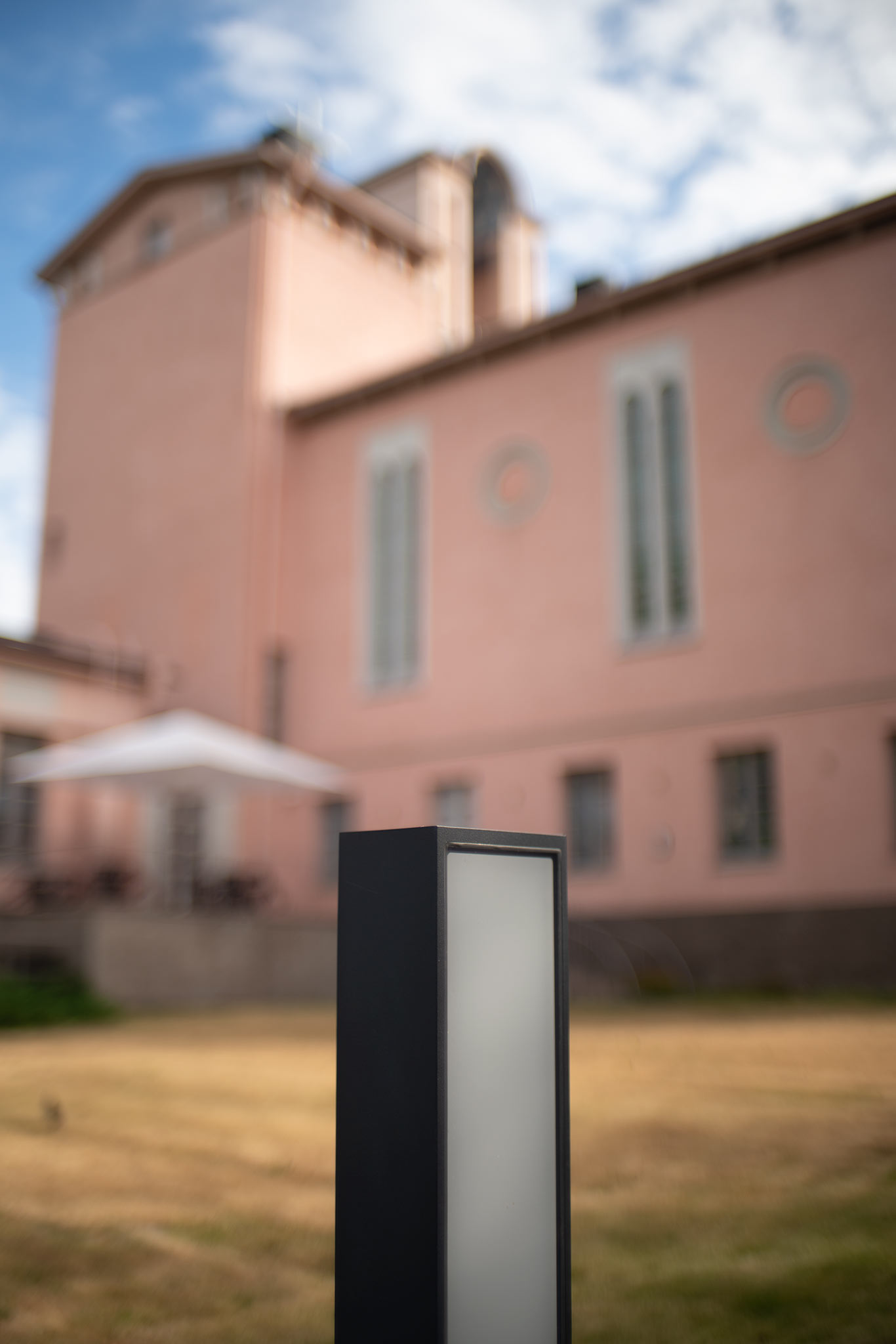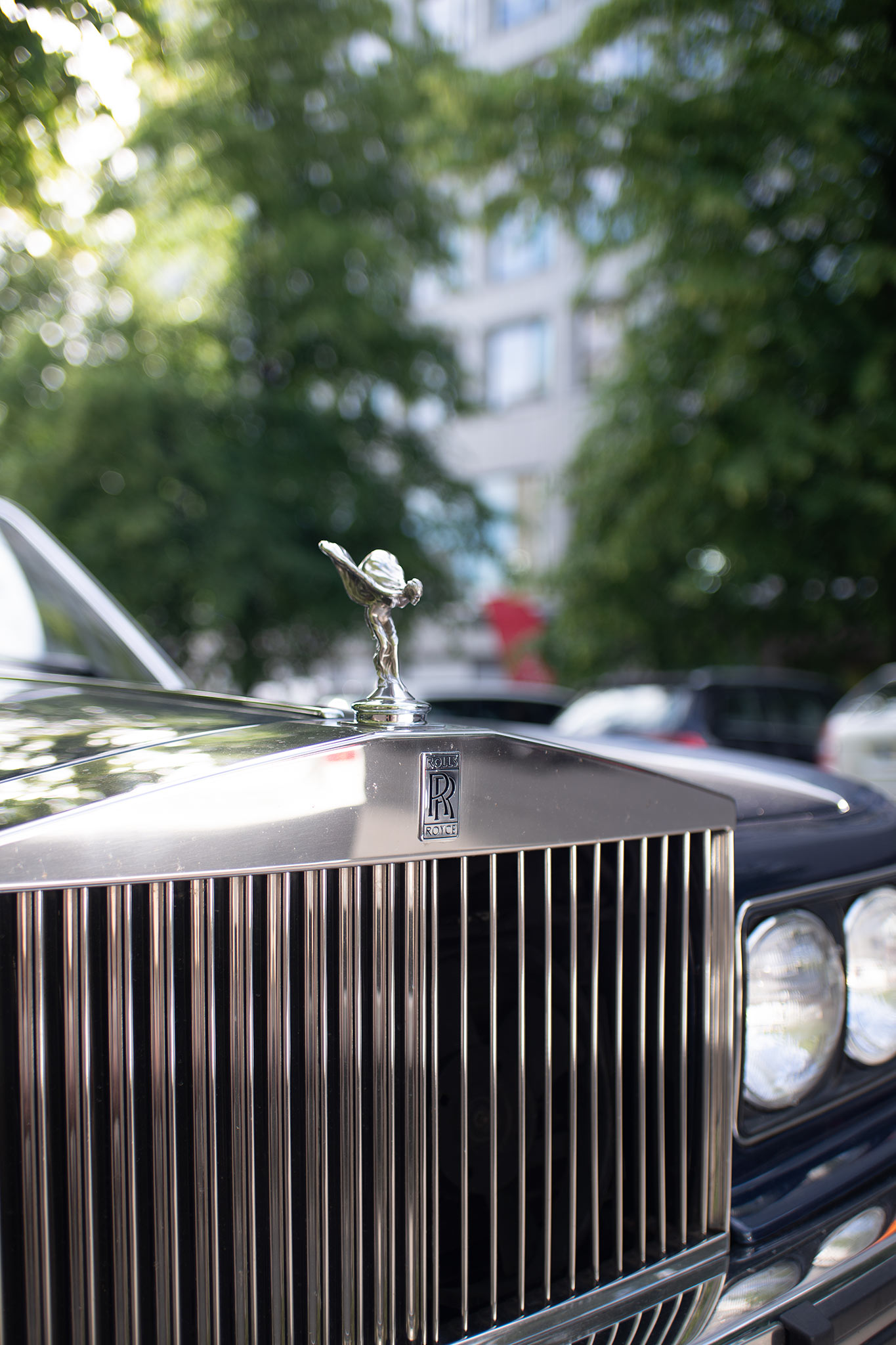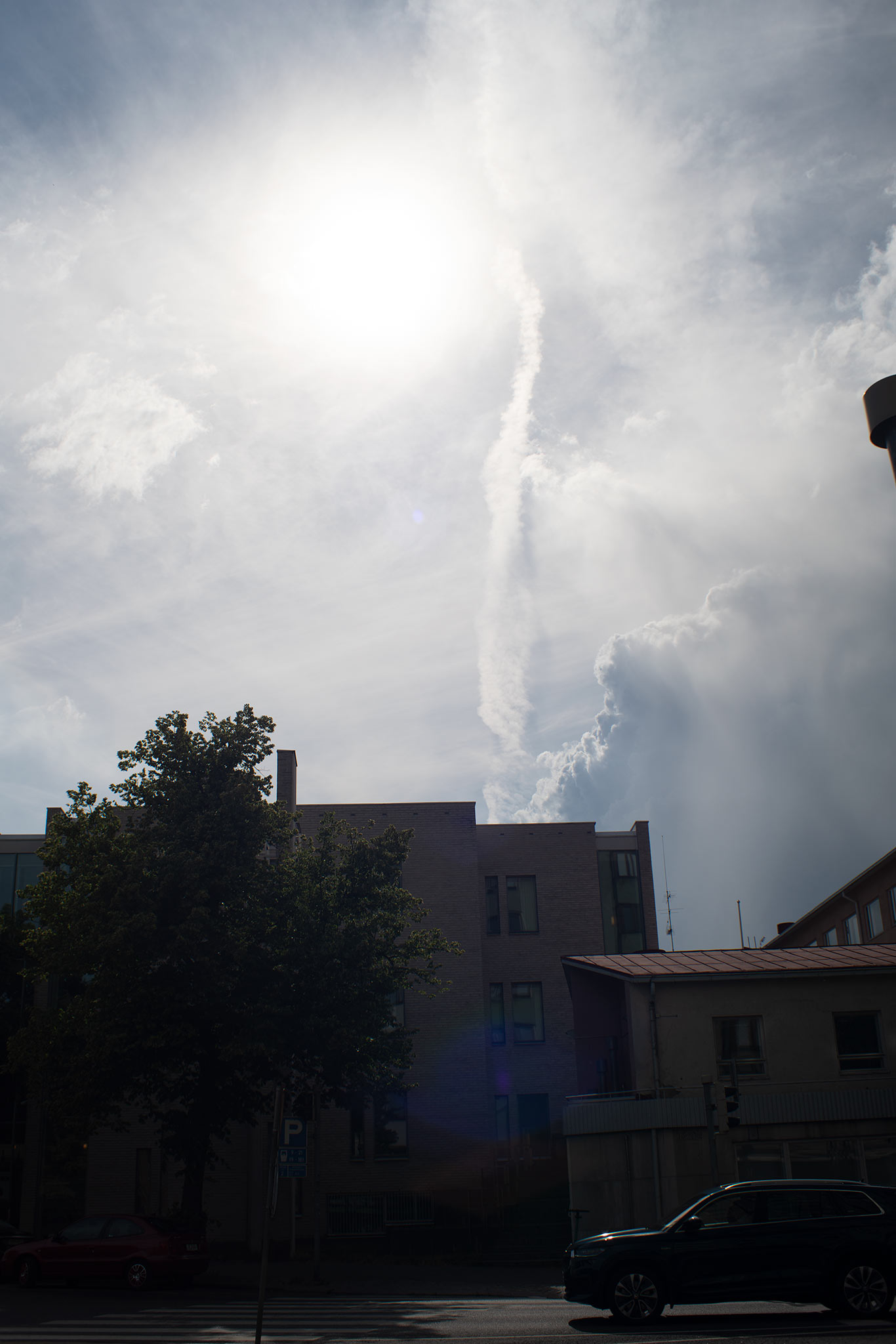The Porst 35 mm f/1.8 is an interesting lens. Not only is it the fastest 35 mm focal length lens ever made in m42 mount, it is also one of the fastest legacy 35 mm SLR lenses ever made – only the rare (and invariably expensive) 35 mm f/1.4 lenses from big names such as Nikkor, Zeiss and Leica (R) are faster.
Note please: The Porst 35 mm f/1.8 is a rebranded lens, originally made by Mitake Optical, and can also be found branded as Formula 5, Spiratone, Universar, and Weltblick. If you find an m42 35/1.8 lens, it is likely the same lens.

Basics and Specs
The key specifications of the reviewed lens are summarised in the following table.
| Lens designation: | PORST WW 1:1.8/35 mm MC AUTO |
| Manufactured: | approx. 1970s |
| Focal length (zoom range): | 35 mm on FullFrame |
| FOV on APS-C/DX Crop | equivalent to 52,5 mm on APS-C/ DX Crop |
| Aperture range, clicks | f/1.8–f/16, clicks at half stops from f/2.8–f/16 |
| Aperture blades, type | 6 blades, straight |
| Optical design (elements/groups) | Unknown |
| Minimum Focus Distance (MFD) | 0,48 m |
| Infinity Hard Stop? | Yes |
| Max Magnification: | ≈ 1:11 |
| Filter Size | 58 mm |
| Lens Diameter / length | 64 mm / 49 mm |
| Lens Weight | 264 g |
| Lens hood? | any suitable-length screw-in 58 mm hood |
| Mount(s) | m42 |
| Related designs (if applicable) | • This lens was produced by Japanese OEM manufacturer Mitake Optical and was available under many brands, including (but not limited to) Porst, Universar, Spiratone, Weltblick, Formula 5 • While (as far as JAPB knows) the Porst WW 35 mm f/1.8 was available only in m42 mount, the same lens was available in some other mounts as well (albeit under other brands) |
| Other noteworthy aspects | This lens was procured in a dismal state (dust and fungus) and was subsequently DIY-CLA’d. Hence the reviewed sample is likely in better working condition then those one would on average find. |
| Sample reviewed: | #370144 |
History
See the JAPB company profile on Porst for more information about the company.
Porst sourced its lenses widely. While some of Porst lenses were direct rebrands of identical lenses of major brands (as in some cases with Fuji lenses), most were sourced from (mostly Japanese) off-brand/OEM manufacturers. Given that some major Japanese brands (as well as notably Zeiss) sub-contracted some of their lens manufacture to these same manufacturers, a lens coming from outside the hallowed grounds of big-name camera manufacturers’ is not automatically a bad thing.
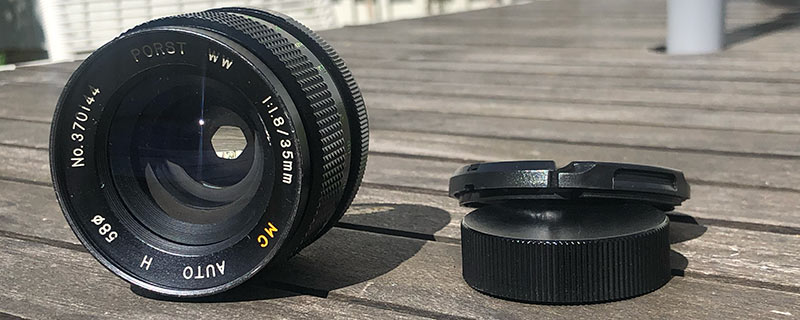
The Porst WW (Weitwinkel, wide-angle) 35 mm f/1.8 is one of those lenses you may also encounter under other (re)brand names. The same lens is available (at least) under the names Weltblick, Spiratone, Universar and Formula 5. With the Porst 35/1.8 being a rebranded lens manufactured by an OEM manufacturer, of which very few records remain online, very little can be said about the lens’ history.
But what makes this lens interesting is, that it’s the fastest (largest aperture), serially produced 35 mm focal length lens for the m42 mount. Given that such ‘firsts’ are rare for OEM/rebranded lenses, one has to ask whether the lens manages to do so with quality, or whether the lens is a case of focusing on attractive specifications (large max. aperture) no matter the cost in image quality?
Features
The Porst 35/1.8 has the typical features of an auto-aperture manual focus m42 lens: it has one ring to direct the aperture, another to define focus and a switch to activate auto aperture functionality.
Besides this, the lens is multicoated, but one has to ask whether the coating technology of an OEM manufacturer is competitive with the likes of Canon’s S.S.C, Nikon’s SIC, or Zeiss’ T*
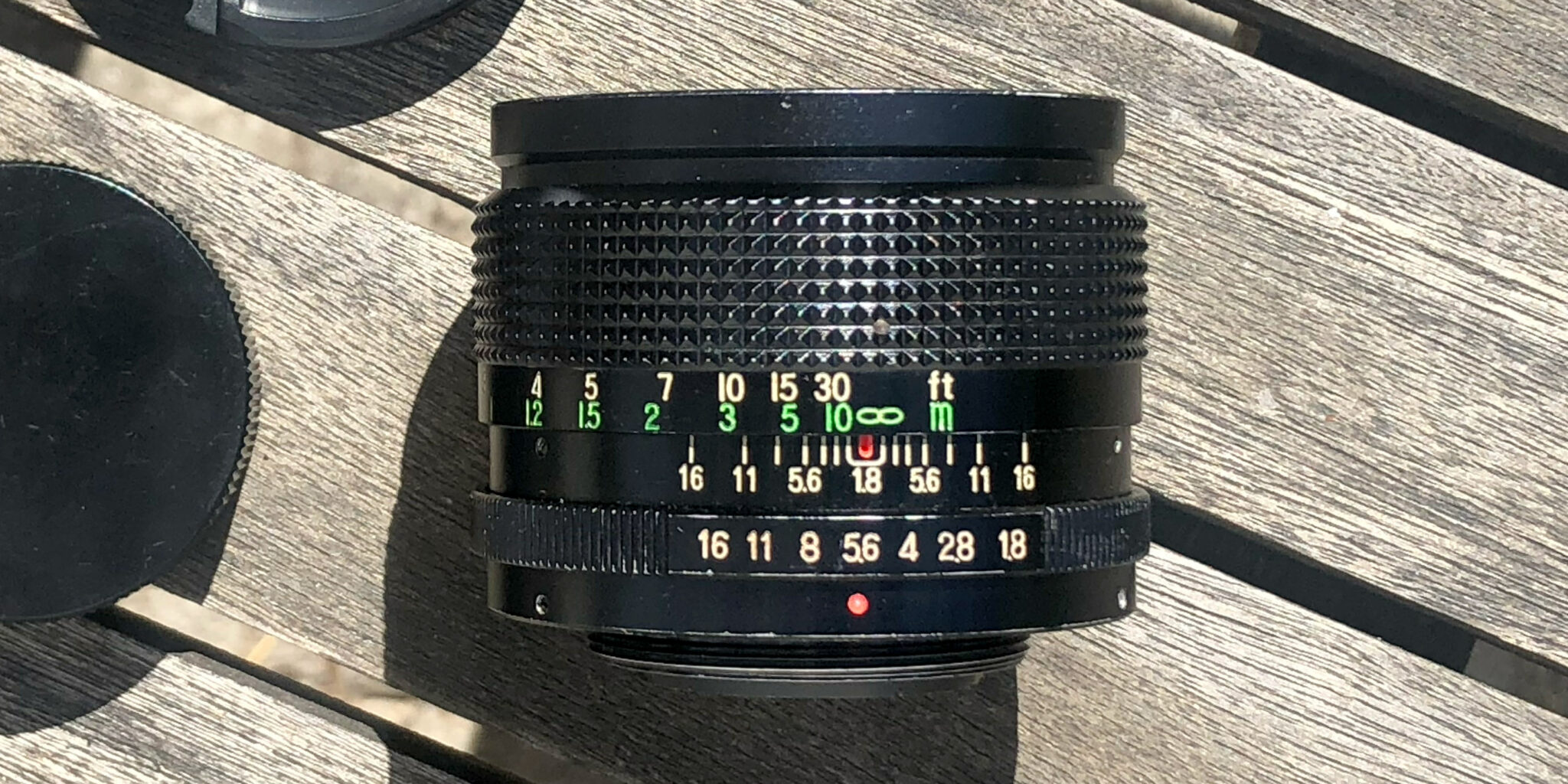
Back-to-front
- m42 mount
- Auto/manual aperture mode switch
- Aperture ring
- Depth of Field indicator
- Focus ring
- ⌀ 58 mm filter threads
Handling
As is customary, we’ll discuss handling both with an eye to those camera bodies which utilise the full feature set, as well as for bodies which do not use all the features.
Common handling characteristics:
The Porst 35/1.8 has a somewhat bulky appearance, but its actual size (64 mm ⌀ ; 49 mm length) are pretty much par for the course for a bright 35 mm lens (actually, a bit on the small side), and its weight (at 264 grams) is not much for a bright 35 mm lens. I suspect its bulky subjective appearance is the product of some rather unambitious industrial design combined with a rather large filter diameter (58 mm).
The focus ring (metal) is rather wide and decently grippy, and while the focusing helicoid was recently lubricated, there is a bit more friction than most other lenses. Even so, focusing is precise.
The aperture ring works. It has click-stops at wide open, and from f/2.8 onward at half-stop intervals (why it does not have a click at f/2 and/or f/2.4 I will likely never understand. The metal aperture ring is not as grippy as I would like, and I would also like it to be a bit wider, but it’s overall a decently tactile solution.
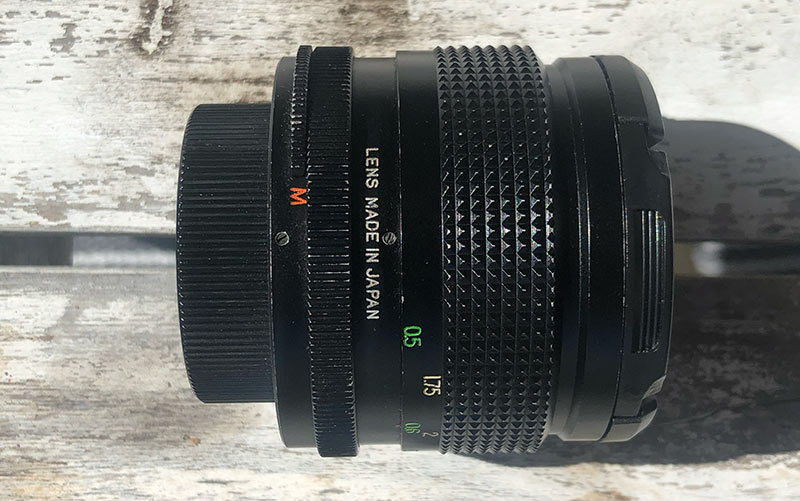
The A/M switch on the Porst … I hate it. But then, I hate all M42 A/M switches that do not clearly lock into position (the absolute majority don’t). The problem with these switches is that they not only have two positions, they also have an intermediate zone, and in that zone the results of your shot may become wholly unpredictable. I personally have ruined many shots because of flaky A/M switches.
Handling in the lens’ intended milieu:
The intended milieu of an auto aperture m42 lens is a m42 mount camera that either offers stop-down metering, or simply is geared towards open-aperture focusing and composition (and off-camera metering).
Alternatively, as this lens also supports manual aperture mode, it can be used on all those even older m42 mount cameras that are unable to automatically stop down the lens prior to taking the shot.
In either case, the Porst does its job as designed, but even here the photographer must take care to not accidentally move the A/M switch into an unintended position.
Handling when used as adapted:
The m42 lens mount is surely the one that has been most adapted throughout the decades (because it preceded many others). Having a flange focal distance of 45,46 mm m42 lenses can be easily adapted to all mirrorless systems (including medium format mirrorless), and even some SLR and dSLR systems (including: Canon EF, Canon FD, Konica AR, Minolta SR, Pentax K etc.). Furthermore, using an adapter with optics, m42 lenses can be adapted to various other mounts, such as Olympus OM, Nikon F, Sony/Minolta A etc. If you’re new to the business of adapting legacy lenses to digital cameras, read the JAPB article on the practicalities of adapting.
Being an auto aperture m42 lens with an A/M switch, one can choose between two types of m42 adapters:
– m42 to <your system> adapters that rely on you using the lens in manual aperture mode…
– m42 to <your system> adapters that have an extra flange to engage the m42 lens’ aperture stop-down pin, thus forcing the auto m42 lens always to act as a manual aperture lens.
In short, if this is not the first m42 lens you’ve adapted to <your system>, it is unlikely that the lens will pose you any problems.
Optics:
JAPB is not aware of the optical recipe (elements/groups) used in the lens, but it is a typical retro focus design. While I have taken this lens apart, I did not make notes on the composition.
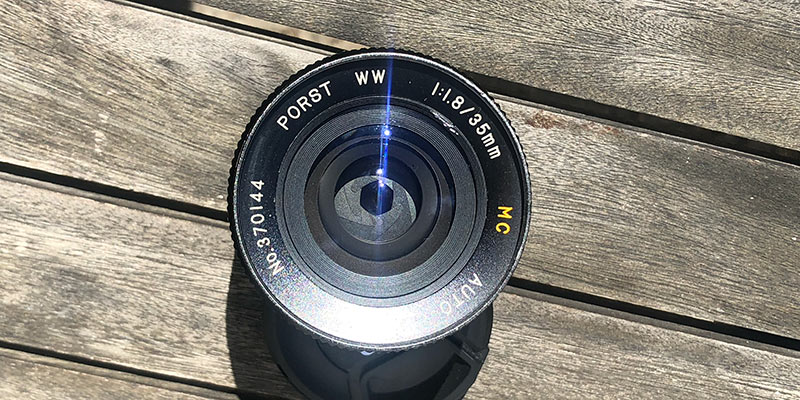
Definition and contrast (a.k.a. ‘sharpness’)
For those readers who are not yet familiar with JAPB reviews and comparisons:
• JAPB differentiates between the two components of ‘sharpness’: definition and contrast. Read more here on why we do so.
• JAPB always tests definition and contrast both at short and at long range, because some lenses are optimised for short range work and others are optimised for distant targets.
Short-range work
For assessing short-range definition and contrast, the brick wall test is useful, even though it depends on negligent field curvature and therefore does not really give a realistic image of the lens’ abilities.
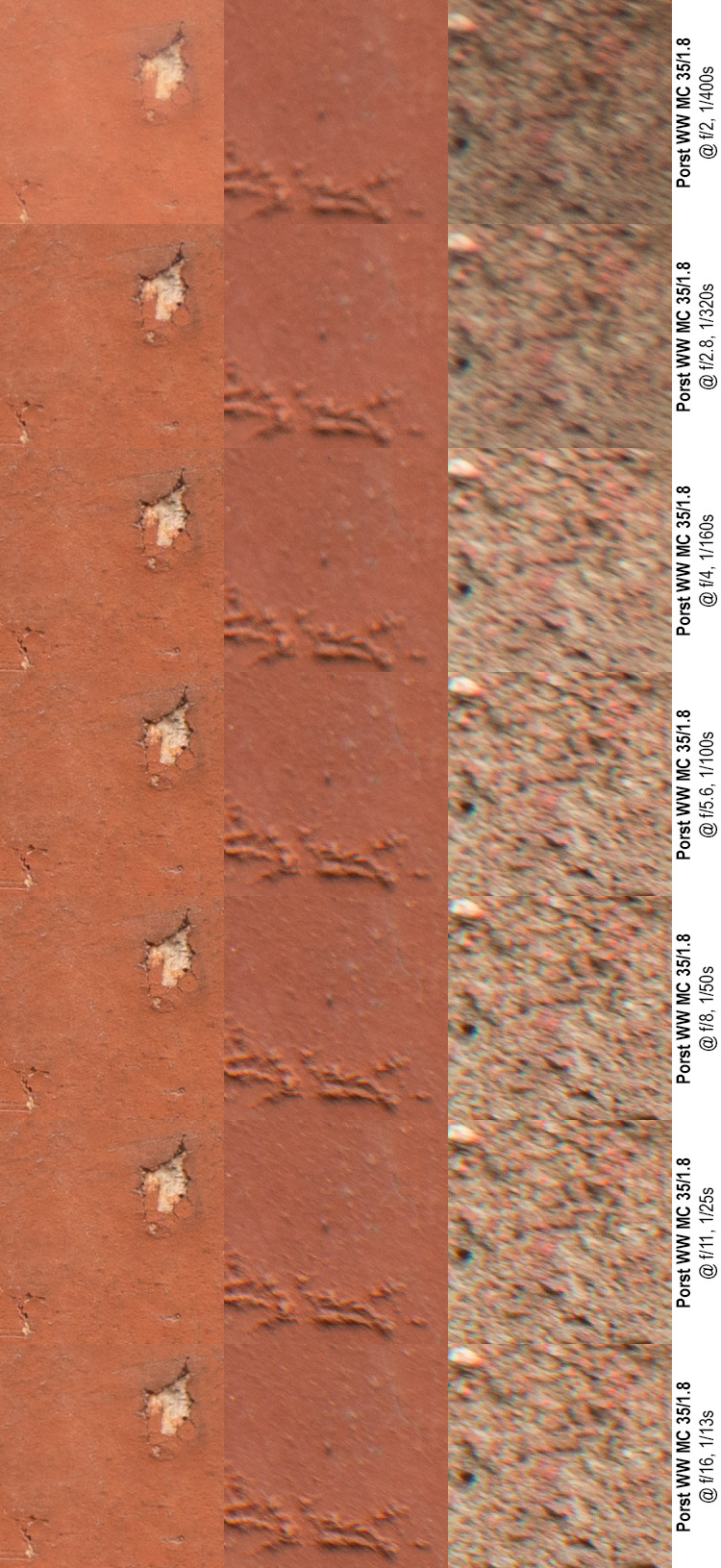
Mid: Off-centre sample
Right: Corner sample
Quick analysis:
• In the centre the Post shows typical wide-open spherical aberration and ensuing lack of contrast, but contrast picks up by f/2.8 and definition reaches decent levels by f/4. Peak sharpness is at f/8.
• Off-centre the Porst is quite weak throughout, and while it reaches semi-decent levels at f/5.6, it does not really reach good levels at any stage.
• In the corner the Porst is also not very good. At wide open and f/2.8 it also shows significant vignetting. While the vignetting is gone by f/4, the corners reach their best level at f/5.6.
Distant targets
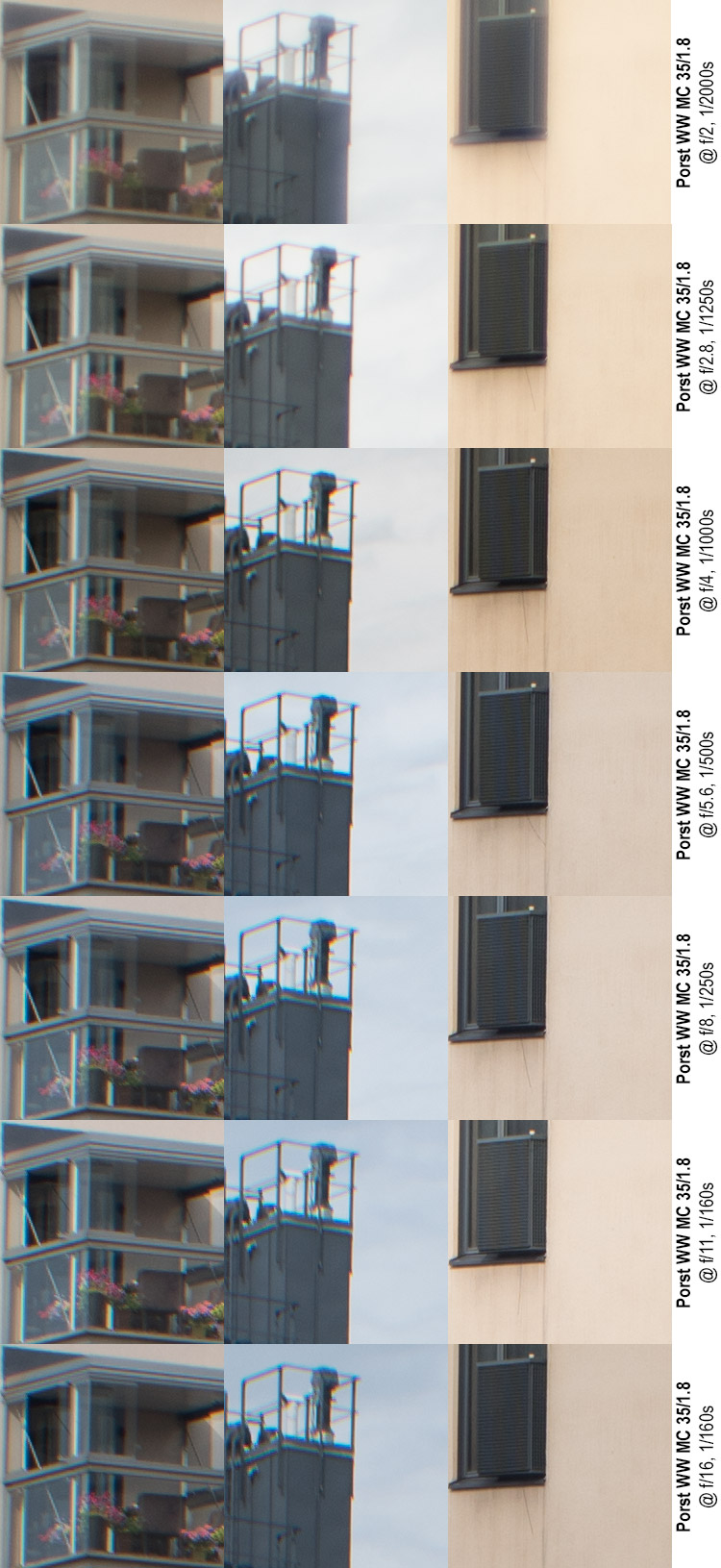
Mid: Off-centre sample
Right: Border sample
Note: Different colour tones are caused by mild changes in lighting conditions
Quick analysis:
• In the centre the Post shows typical wide-open spherical aberration and ensuing lack of contrast, but contrast picks up by f/2.8 and definition reaches decent levels by f/4. Peak sharpness is at f/8.
• Off-centre the Porst is quite weak throughout, and while it reaches semi-decent levels at f/5.6, it does not really reach good levels at any stage. Moreover, the sample highlights (pun intended) the Porst’s tendency to have significant lateral chromatic aberrations at high-contrast transitions.
• At the border (note: not corner) the Porst shows significant significant unsharpness wide open and at f/2.8, but improves significantly at f/4 and reaches decent levels at f/5.6.
Quick summation re: definition and contrast
It is quite obvious that the Porst WW 35 mm f/1.8 suffers significant weaknesses wide open and off-centre. Also, it does seem to have a very significant propensity towards lateral chromatic aberrations which are highly visible in high-contrast transitions. Even so, I’d be vary of saying that the Porst is especially soft. I’d rather say that the Porst has some clear limitations
Vignetting
The Porst lens does vignette (what lens does not?), but it is somewhat noteworthy that while its vignetting is not overall worse than others, it does have a tendency towards severe vignetting in the absolute corners. The samples below are 100×100 pixel excerpts of absolute corners (from a Sony ⍺7R2’s 7952×5304 files), which show that while vignetting is otherwise not field relevant beyond f/2.8, the absolute corners recover full illumination only at f/8

Distortions
The Porst lens shows moderate barrel distortion (more than other lenses in this class), but the distortion is not of a mixed/mustache type and can easily be corrected in any half-decent photo editor (Photoshop’s lens correction tool will fix the distortion with a value of approximately +5,70).

While these types of distortions are easily fixed with digital images, the Porst’s moderate distortion means that the lens is not usable for distortion-critical work (e.g. architecture) on film.
Out-of-focus character
Disclaimer: The quality of out-of-focus areas (a.k.a. ‘Bokeh’) is not only highly subjective, but also very much dependent on the relative distances (to subject and to background). Hence these samples should be seen not as definitive but as exemplars.
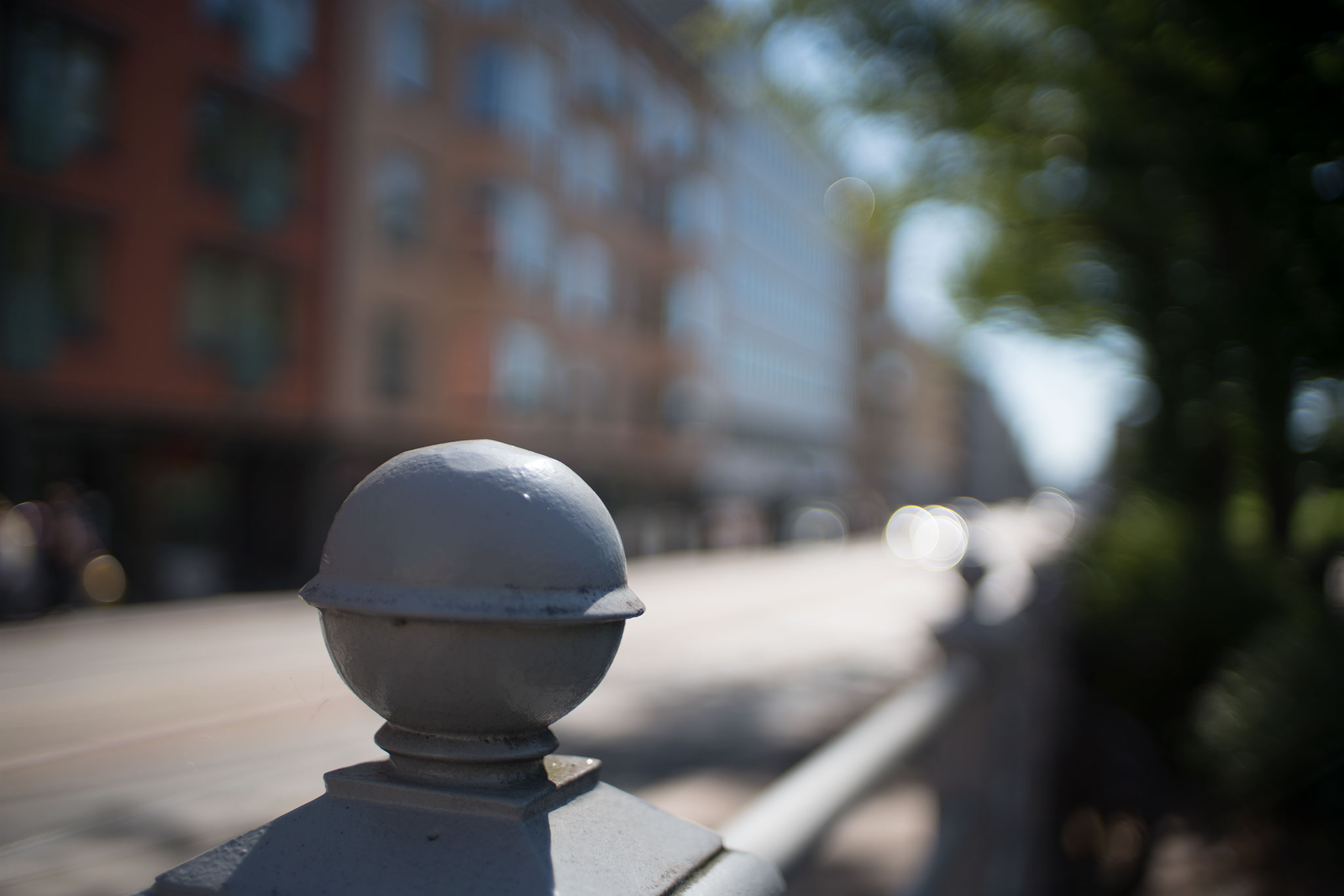
(right-click and open image in new tab for bigger version)
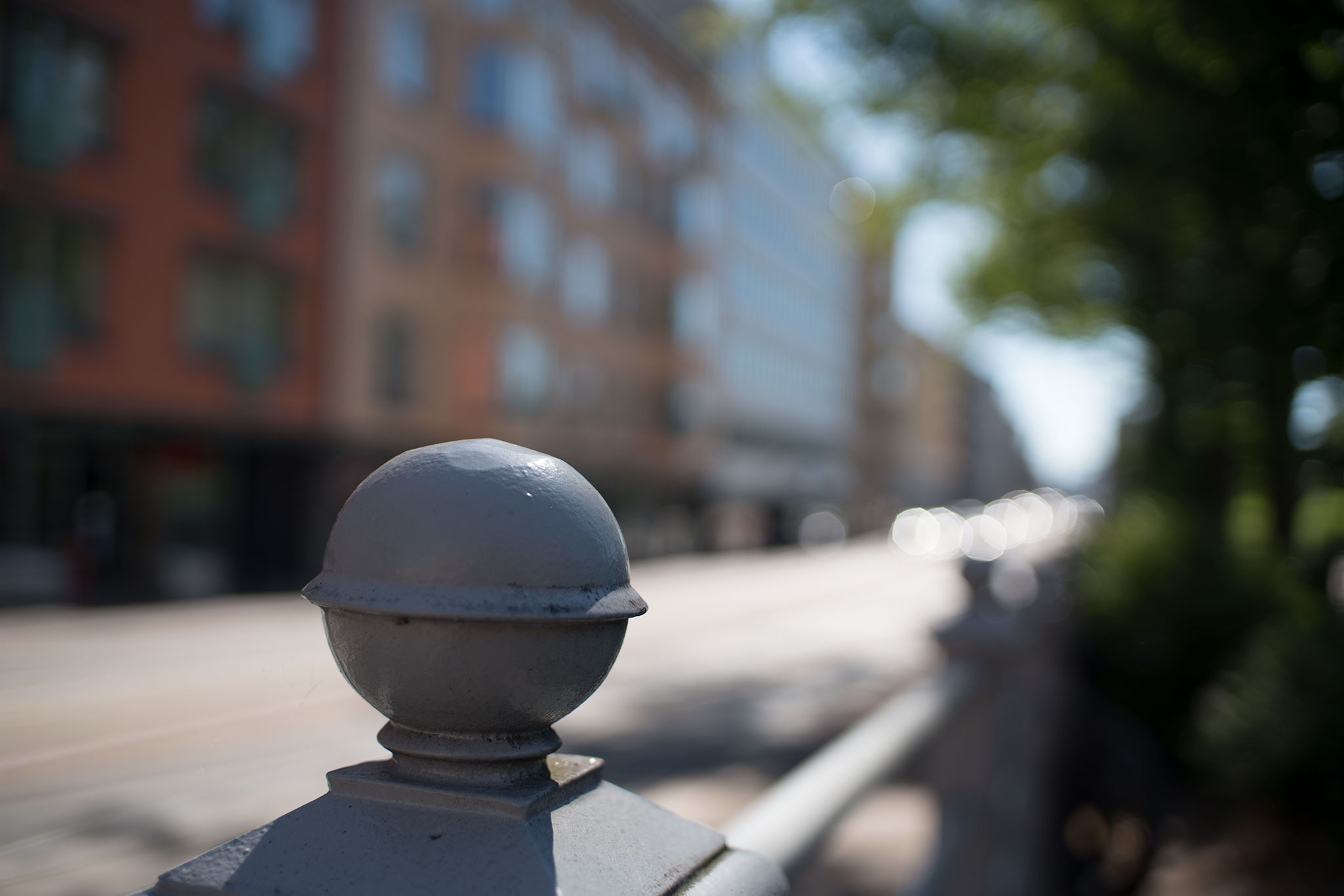
(right-click and open image in new tab for bigger version)
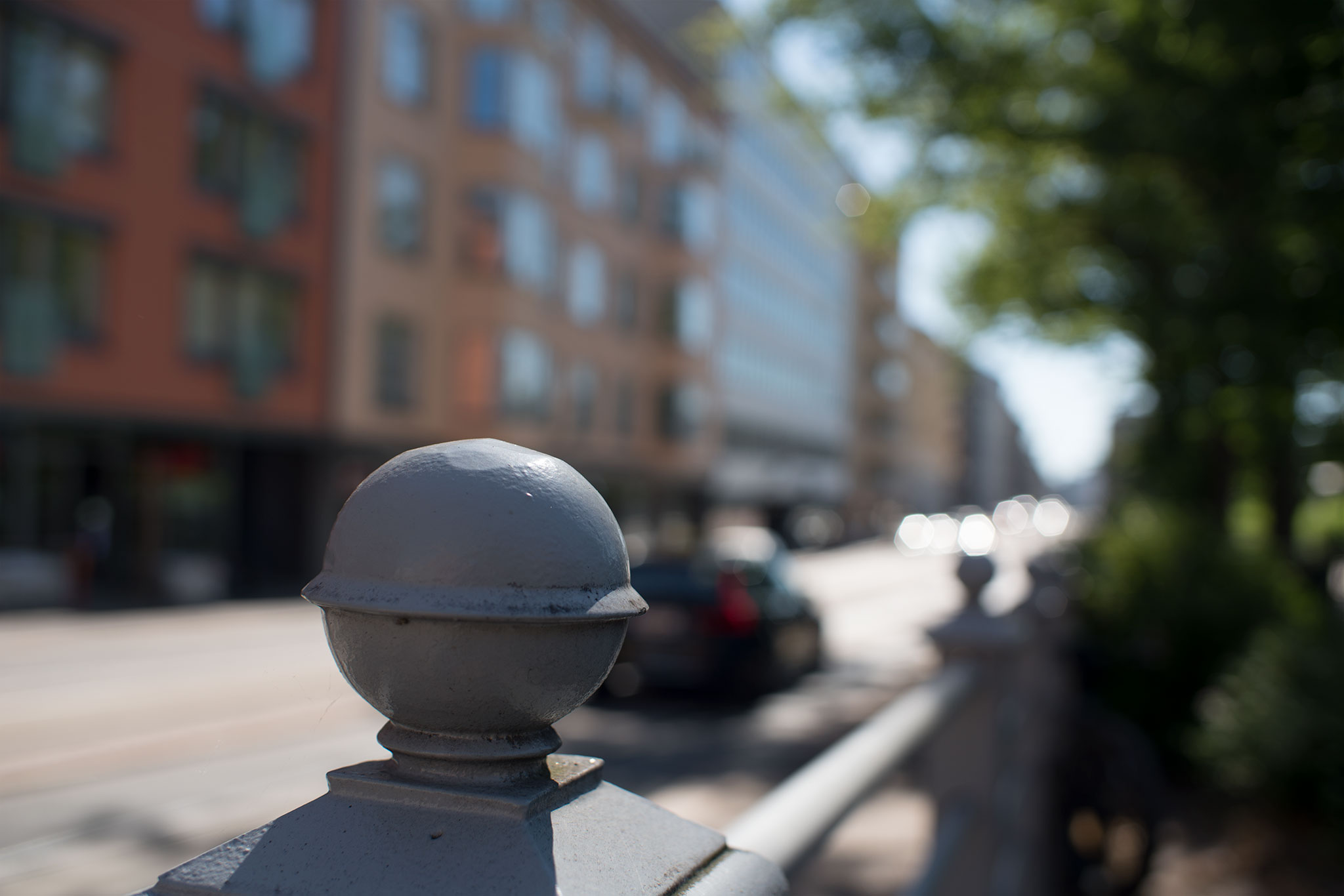
(right-click and open image in new tab for bigger version)

(right-click and open image in new tab for bigger version)
Quick analysis:
Overall the Porst’s background out-of-focus characteristics are quite nice, and the transition zones seem rather well behaved. Personally, I find the Porst’s background to be somewhat busy and distracting at wide open, but by f/2.8 the background has calmed down nicely.
Color reproduction
The Porst’s colour reproduction is quite balanced, with a minor slant towards warmer colours. Not bad at all.
Flare and veiling
While the Porst is a ‘multicoated’ lens, that does not say much about the quality of those coatings. The lens’ ability to handle sunlight in the frame or just outside the frame is not especially good and even point-light sources lead to veiling flare (these lights are in the absolute image centre).
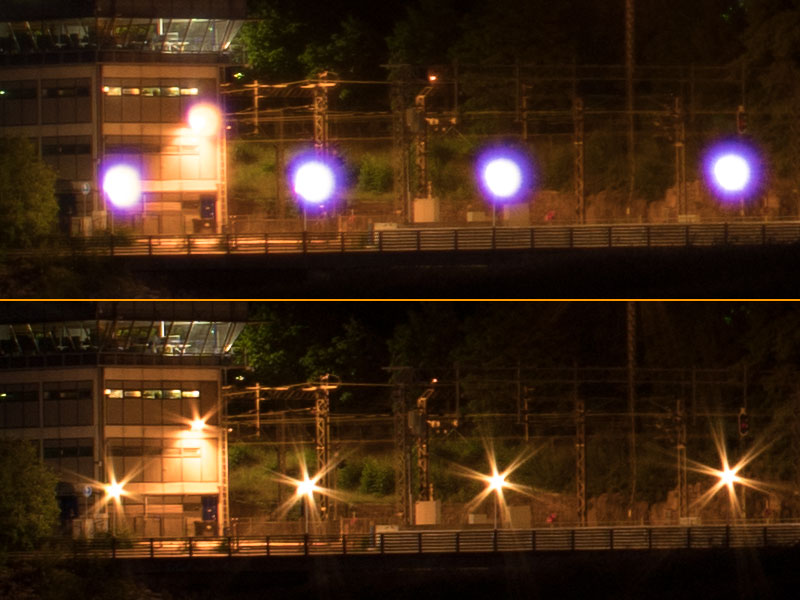
Top: wide open (f/1.8)
Bottom: @ f/5.6
OTOH, the Porst does not produce any egregious ghosting patterns (which, to some, is not a good thing).
CA’s, Coma, haloing, etc.
That the Porst suffers significant chromatic aberrations was already ascertained. Let’s see about coma, astigmatism etc.
Note please: many sites say a lens suffers coma, when in fact the issue is astigmatism. Read up on the subject in the JAPB articles on comatic aberration (coma) and astigmatism.
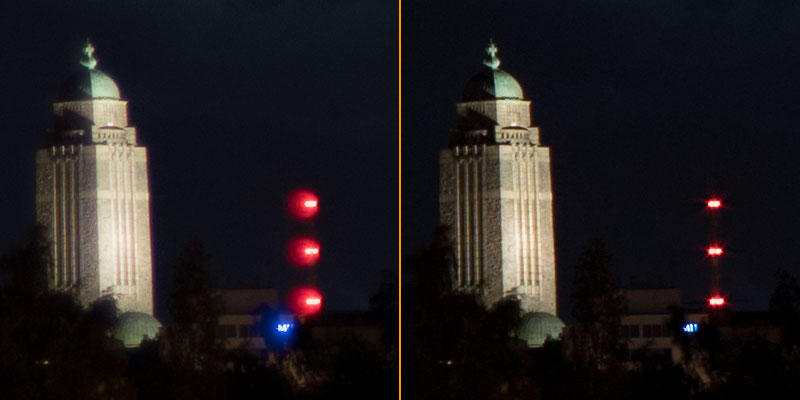
Left: wide open (f/1.8)
Right: @ f/5.6
While many reported cases of coma are not really coma, the Porst WW 35 mm f/1.8 actually does show real comatic aberration in some cases. In the example above (the image centre is to the left of these excerpts) the Porst shows a clear example of negative comatic aberration when used wide open.
However, coma is not the Porst’s only limitation, as in other shots it also manages to display distinct sagittal astigmatism (see below).

Left: Original image resized to 1365×2048
Right: excerpts (1:1) from original full-size image
(right click image and open in new tab for larger version)
Summary:
While these images (and my commentary) may give the reader the impression that the Porst is an exceptionally bad lens, I would not agree. While it does have its weaknesses, these are by no means exceptional, nor beyond what is normal for a legacy lens. I recommend readers to see the lens in perspective (with other similar lenses), by having a look at the JAPB comparison of nine fast 35 mm lenses.
Sample shots:
Here are some more sample shots.
